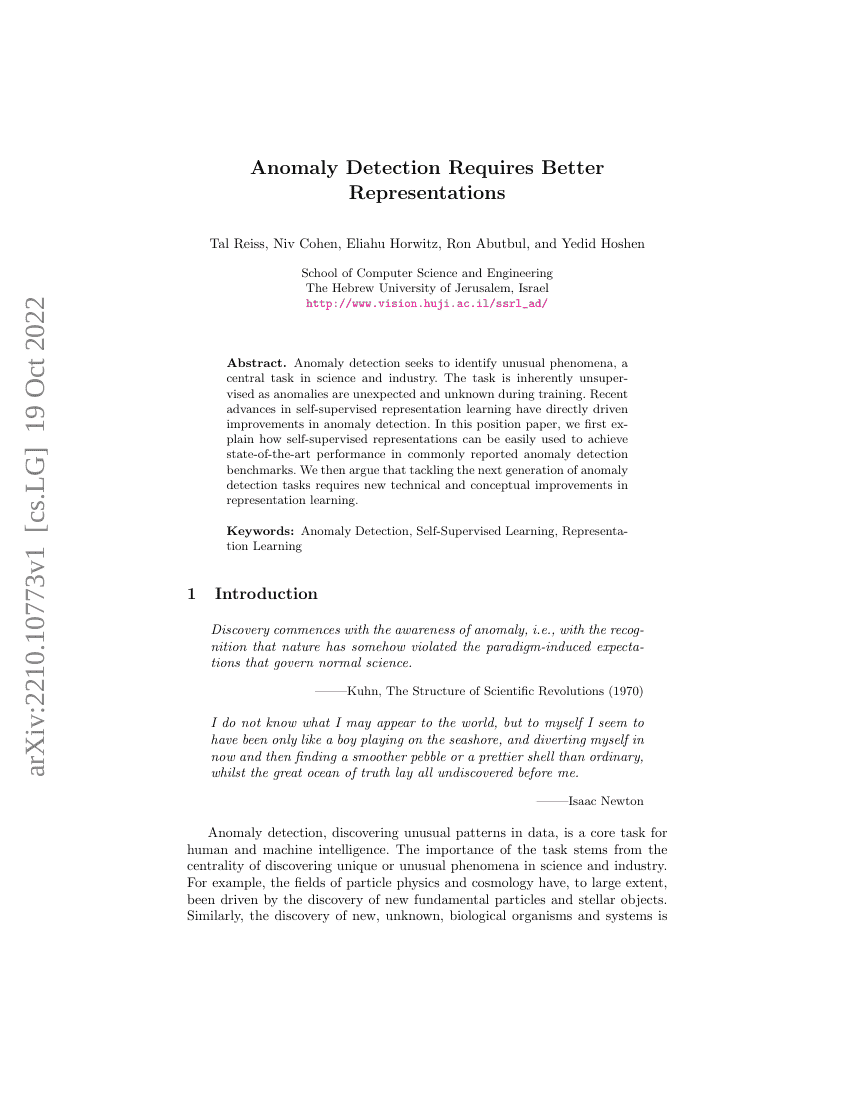Command Palette
Search for a command to run...
Tal Reiss; Niv Cohen; Eliahu Horwitz; Ron Abutbul; Yedid Hoshen

Abstract
Anomaly detection seeks to identify unusual phenomena, a central task in science and industry. The task is inherently unsupervised as anomalies are unexpected and unknown during training. Recent advances in self-supervised representation learning have directly driven improvements in anomaly detection. In this position paper, we first explain how self-supervised representations can be easily used to achieve state-of-the-art performance in commonly reported anomaly detection benchmarks. We then argue that tackling the next generation of anomaly detection tasks requires new technical and conceptual improvements in representation learning.
Code Repositories
Benchmarks
| Benchmark | Methodology | Metrics |
|---|---|---|
| anomaly-detection-on-odds | ICL | AUROC: 0.889 F1: 0.681 |
| anomaly-detection-on-odds | kNN | AUROC: 0.902 F1: 0.699 |
| anomaly-detection-on-odds | GOAD | AUROC: 0.782 F1: 0.544 |
| anomaly-detection-on-one-class-cifar-10 | DINO-FT | AUROC: 98.4 |
Build AI with AI
From idea to launch — accelerate your AI development with free AI co-coding, out-of-the-box environment and best price of GPUs.